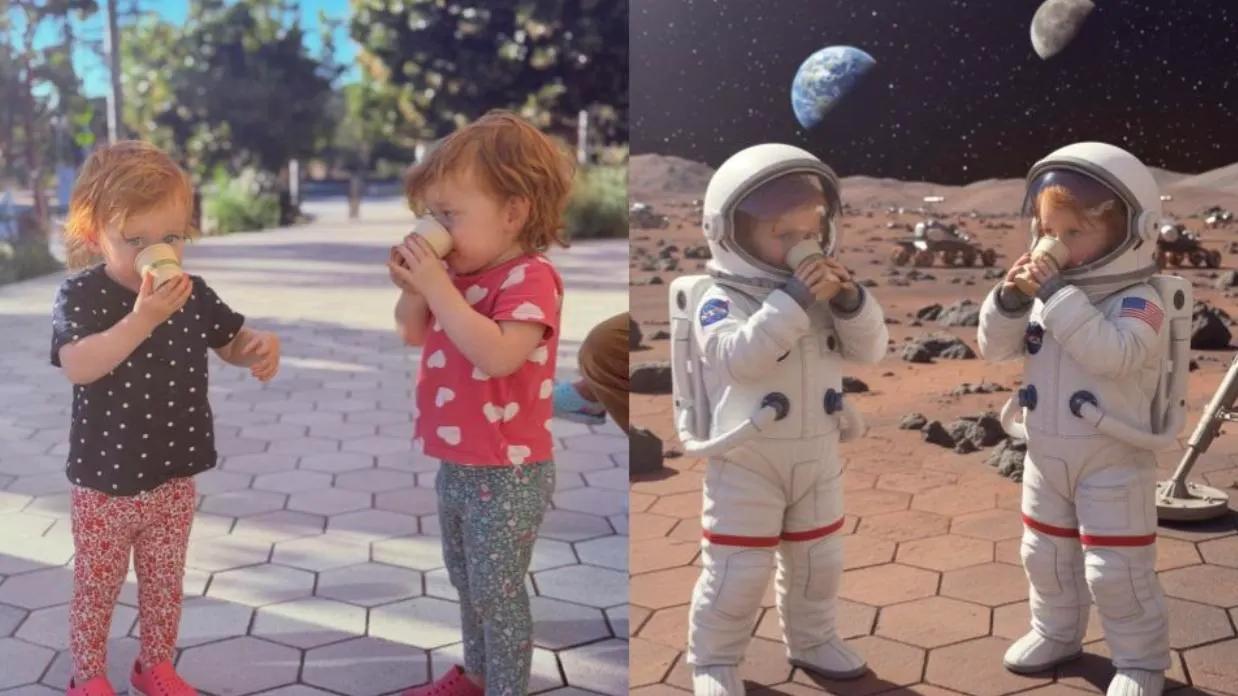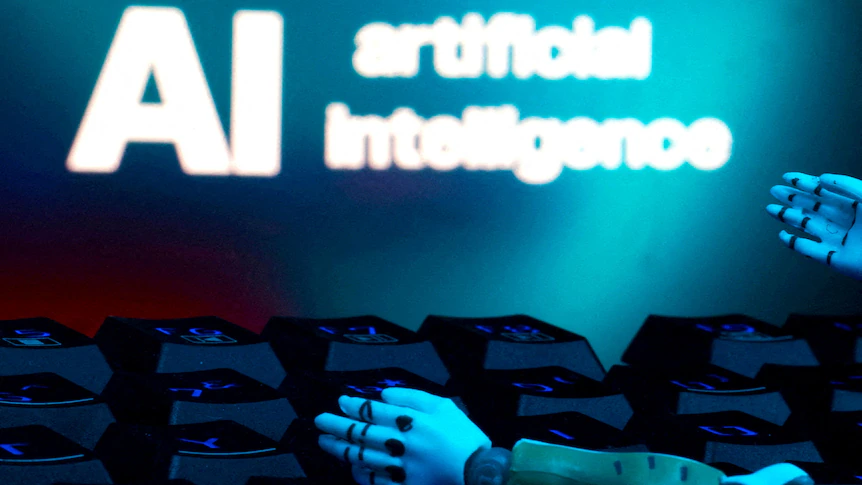By Contributor,Edna Martinson
Copyright forbes

Children are growing up in an AI-first world. Parents who introduce AI through playful activities can build confidence and curiosity, while guiding kids away from harmful uses.
Side by side of children in a real photo and an AI edited one.
Jaclyn Konzelmann
For many parents and caregivers, artificial intelligence still feels like a black box. Headlines about job loss, misinformation, or screen addiction fuel a sense of fear, especially when it comes to exposing children to the technology. The instinct is often to protect kids by keeping AI out of reach. But the reality is that children are growing up in an AI-first world. Shielding them entirely is neither possible nor helpful.
Instead, parents and caregivers have an opportunity to introduce AI thoughtfully as a tool to spark creativity, build digital literacy, and set healthy boundaries. The best place to begin is not in the classroom or workplace, but at home.
At a recent Google AI Founders Summit, Jaclyn Konzelmann, Director of Product Management at Google Labs, shared how she spends time with her children using playful AI tools. Together they bring drawings to life, co-create storybooks, and even build simple cookbooks. For her family, AI is not a distant concept but a canvas for imagination. “It’s amazing to see how AI can make learning so delightful and personalized for my kids. We use it to bring their creative ideas to life. For example, we were recently sitting on the floor reading nursery rhymes, and after we finished the book, we extended the fun. I used the Gemini app to turn a line about birds flying out of a pie into a short video clip, and watching their story come alive had them laughing uncontrollably. I also used a tool called Opal to build a simple ‘Fact Snacks’ app – if my eldest daughter is curious about space or dinosaurs, it creates a short, selfie-style video of a character explaining a fun fact. For parents, it’s a powerful way to engage a child’s curiosity and show them, in real-time, the incredible things their imagination can create.”
Jaclyn Konzelmann presenting at the inaugural Google AI Founders Summit 2025.
Jaclyn Konzelmann
MORE FOR YOU
These kinds of activities illustrate what responsible early exposure can look like. Rather than treating AI as a force to fear, families can show kids that it is a tool; one that can enhance creativity, collaboration, and problem-solving. Children who use AI to turn a sketch into an animation or to brainstorm characters for a storybook start to see it not as magic, but as something they can direct with their own ideas. That shift is powerful.
Of course, introducing AI to kids is not without risks. As with social media, overuse or unmonitored access can lead to negative outcomes. If children begin to treat AI as a confidant or spend hours in unstructured conversations with chatbots, it can blur healthy boundaries. This is why balance and literacy are critical.
One founder, Maria Barrera, addressing this issue is building Clayful, a company focused on youth mental health in the age of AI. Her perspective is that “Kids are going to be exposed to AI whether we like it or not—and if we don’t help them meet their underlying needs, they’ll turn to AI to try to fill the gaps.
As educators and parents, our role is to create safe spaces for honest conversations, tough questions, and real connection. I think of AI like Excel: you can’t really master Excel without a basic understanding of math or logic. The same goes for using AI for emotional support—it can be powerful if you know how to ask meaningful questions, but kids don’t yet have those skills. That’s why we need to scaffold their experience with genuine human connection, empathy, and age-appropriate tools, like we do at Clayful, so AI becomes a complement, not a replacement.”
AI literacy goes beyond knowing how to use tools. It is about helping kids distinguish between creative and safe uses versus potentially harmful ones. Just as parents and caregivers teach children not to spend hours doomscrolling social media, they can set expectations for AI. For example:
Using AI to co-create art or generate fun prompts = encouraged.
Using AI as a replacement for friendships or as an emotional support system = discouraged.
With the right framing, AI becomes less about restriction and more about responsibility. Kids begin to understand that AI is not a best friend, but it can be a great creative partner.
This perspective is echoed by other AI founders and educators who believe children should start experimenting early, with guidance. Taylor Shead, Founder and CEO of Stemuli believes AI is a bridge between imagination and real-world skills. When kids co-create with AI, turning doodles into stories or testing business ideas, they stop seeing it as magic and start seeing themselves as builders. That shift sparks creativity, confidence, and lasting literacy.
It is also worth remembering that parents and caregivers do not need to be experts before guiding their kids. This is new territory for everyone. Part of the opportunity lies in learning together. A child experimenting with a drawing tool alongside a parent not only gets to explore creativity but also sees that curiosity and caution can coexist. For families, this can be both educational and bonding.
The lesson is not “hand your child an AI app and hope for the best.” It is to begin with small, safe, and fun experiences. Use AI to animate a doodle, to co-write a bedtime story, or to imagine new recipes. Keep conversations open about what the tool is doing and why. Then, as kids grow, expand the conversation to include ethics, bias, and limitations. These are not abstract lessons; they are life skills for the next generation.
We are all learning in real time as AI evolves. That includes parents, teachers, and children alike. By approaching AI with care, creativity, and literacy, parents can equip their kids to thrive in an AI-first world. The choice is not between shielding and surrendering. It is about guiding kids toward the fun, imaginative uses of AI while teaching them how to navigate its boundaries.
The future will not wait until children are old enough to enter the workforce to introduce AI. It is already here. Parents who lean into it early, with intention, can give their kids an advantage far more valuable than fear: confidence.
Editorial StandardsReprints & Permissions



